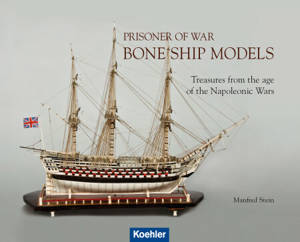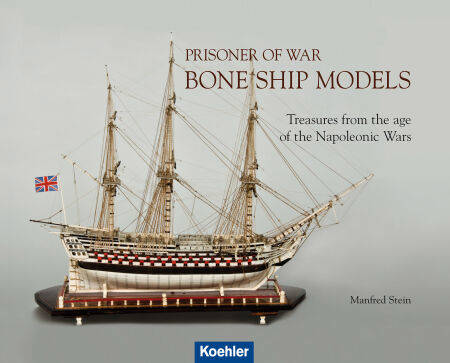
- Afhalen na 1 uur in een winkel met voorraad
- Gratis thuislevering in België vanaf € 30
- Ruim aanbod met 7 miljoen producten
- Afhalen na 1 uur in een winkel met voorraad
- Gratis thuislevering in België vanaf € 30
- Ruim aanbod met 7 miljoen producten
Zoeken
Prisoner of War - Bone Ship Models E-BOOK
Treasures from the Age of the Napoleonic Wars
Manfred Stein
E-book | Engels
€ 99,99
+ 99 punten
Uitvoering
Omschrijving
During 1792-1815, the period of the Coalition Wars and the Napoleonic Wars between France and Europe, prisoners were taken on both sides. The majority of them were confined, sometimes for many years, in England and Scotland. Some of the prisoners built ship models from scraps of wood or mutton and beef bones. Rigging was made of silk or whatever other fine material could be obtained. The prisoners developed an art form and the models were sold to the public through the guards. This trade enabled the prisoner to acquire ivory and special tools to make the models all the more decorative. The remain highly sought after and valuable collectors' items to this day. This book shows the beauty of the models selected as the finest in the Peter Tamm Collection in the International Maritime Museum of Hamburg.
Specificaties
Betrokkenen
- Auteur(s):
- Uitgeverij:
Inhoud
- Aantal bladzijden:
- 408
- Taal:
- Engels
Eigenschappen
- Productcode (EAN):
- 9783782214612
- Verschijningsdatum:
- 1/11/2015
- Uitvoering:
- E-book
- Formaat:
- ePub

Alleen bij Standaard Boekhandel
+ 99 punten op je klantenkaart van Standaard Boekhandel
Beoordelingen
We publiceren alleen reviews die voldoen aan de voorwaarden voor reviews. Bekijk onze voorwaarden voor reviews.








